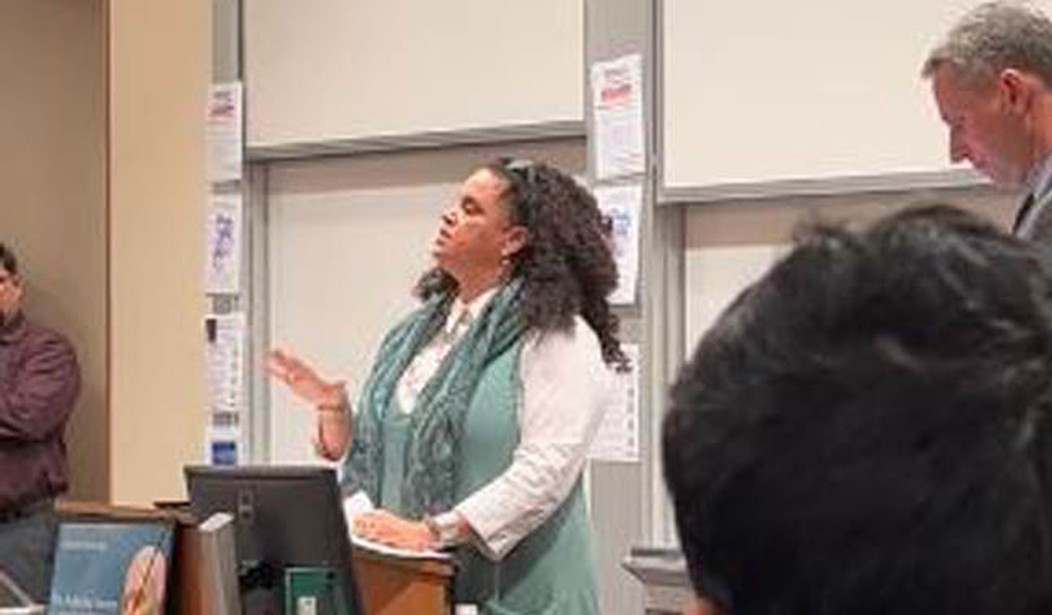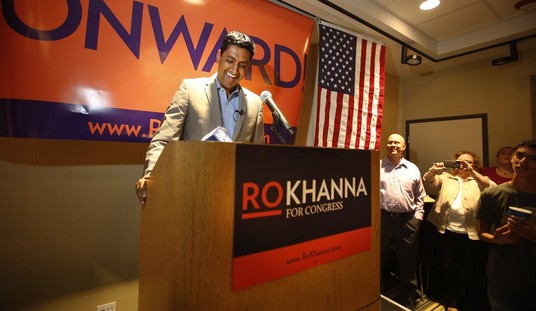I sort of knew this was coming from the moment this story broke. Over at Slate Mark Joseph Stern has written his own version of what happened at Stanford Law last Thursday. In Stern’s view, Judge Duncan’s appearance at Stanford was part of a plan to get himself on the Supreme Court…or something.
Judge Stuart Kyle Duncan went to Stanford Law School looking for a fight, and he got one. The ultraconservative judge, a Donald Trump nominee, ostensibly visited the campus on Thursday to talk about “COVID, guns, and Twitter” at an event sponsored by the Stanford Federalist Society. But once in the classroom, he immediately faced protesters who shouted questions about his hostility to civil rights, especially LGBTQ equality. Duncan came prepared, striding into the room with his camera out to film the event so he could “make a record” of their demonstration. After an administrator and a student leader quieted the protesters, the judge skipped his speech and moved directly to Q&A. He then insulted various students (“you are an appalling idiot,” the judge told one) while refusing to engage with their questions. After departing, the judge embarked upon a conservative media tour, declaring that the “coddled law students” behaved like “dogshit” and urging Stanford to discipline them.
Duncan got the attention he so obviously wanted, drawing instant support from GOP senators and Fox News. He emerged as a folk hero on the right, the audacious judge who punched back at crybullies on the left who tried to silence his free speech. Yes, his behavior was injudicious; that was the point. The judge has likely concluded that conducting himself like a truculent provocateur will increase his odds of advancing to the Supreme Court under a future Republican president.
This calculation is perfectly rational. Duncan is far from the only Trump nominee who is currently auditioning for SCOTUS. At Stanford Law, the judge saw an opportunity to brandish his demagogic bona fides. Nobody should be surprised that he ran with it.
This is a very convenient way to turn the situation around. By claiming Judge Duncan only “ostensibly” came to Stanford to give a speech on his work and by further claiming his intent all along was really “auditioning for SCOTUS” Stern makes Judge Duncan the aggressor in this situation. That’s conveniently how the student protesters see it as well. In their view, his showing up was an offense to their sensibilities which had to be met with discourtesy and an attempt to heckle him into silence.
There’s no doubt that Judge Duncan gave as good as he got. He was not especially kind to the law students who were baiting and berating him with crude and crass messages about his sex life. But it’s a long way from saying that to claiming his whole intent all along was merely to rile up students. To put it bluntly, Mark Joseph Stern can’t possibly know that unless he’s a mind reader on the side. Judge Duncan specifically denied the claim that he had no prepared remarks saying the speech he never got a chance to deliver was on his iPad.
Stern goes on to criticize the early reporting on the story, claiming there is plenty of evidence that Judge Duncan was not shouted down at all. For those who haven’t been following this closely, NRO’s Ed Whelan published a 9 minute video last Friday which mostly consists of Judge Duncan saying he’s being heckled constantly and Dean Steinbach giving a speech that lasts about 7 minutes. We don’t see what happened before that video and there are only a few brief videos showing what happened afterwards. But here’s how Stern reports it. [emphasis added]
At the start of Whelan’s video, it sounds as if progressive protesters “shouted down” Duncan (in Whelan’s words), preventing him from delivering prepared remarks.
As multiple firsthand accounts and videos demonstrate, that is not what happened. In reality, at the start of those remarks, the protesters peppered the judge with questions and criticisms but did not drown out his speech. Instead, a frustrated Duncan asked for an administrator to step in to tamp down the heckling.
It’s entirely possible there are multiple firsthand reports and videos that demonstrate Judge Duncan was not being drowned out before the start of Whelan’s 9-minute-long video. The problem is that Stern doesn’t link or cite any of them. I’ve tried to search for videos showing the first part of the talk and I haven’t found them. Again, that doesn’t mean they don’t exist but if they do why not just provide a link?
There are two reasons I’m skeptical of what Stern is claiming. The first is that it seems to contradict the reporting from David Lat. Here’s how Lat described the early moments of the event. “From the beginning of his speech, the protestors booed and heckled continually,” he wrote.
When the Stanford FedSoc president (an openly gay man) opened the proceedings, he was jeered between sentences. Judge Duncan then took the stage—and from the beginning of his speech, the protestors booed and heckled continually. For about ten minutes, the judge tried to give his planned remarks, but the protestors simply yelled over him, with exclamations like “You couldn’t get into Stanford!” “You’re not welcome here, we hate you!” “Why do you hate black people?!” “Leave and never come back!” “We hate FedSoc students, f**k them, they don’t belong here either!” and “We do not respect you and you have no right to speak here! This is our jurisdiction!”
Throughout this heckling, Associate Dean Steinbach and the University’s student-relations representative—who were in attendance throughout the event, along with a few other administrators (five in total, per Ed Whelan)—did nothing. FedSoc members had discussed possible disruption with the student-relations rep before the event, and he said he would issue warnings to those who yelled at the speaker, but only if the yelling disrupted the flow of the event. Despite the difficulty that Judge Duncan was having in giving his remarks, plus the fact that many students were struggling to hear him, no action was taken.
After around ten minutes of trying to give his remarks, Judge Duncan became angry, departed from his prepared remarks, and laced into the hecklers. He called the students “juvenile idiots” and said he couldn’t believe the “blatant disrespect” he was being shown after being invited to speak. He said that the “prisoners were now running the asylum,” which led to a loud round of boos. His pushback riled up the protesters even more.
Eventually, Judge Duncan asked for an administrator to help him restore order.
As you can see, this sounds quite a bit more disruptive than the way Stern described it. Shouting “Why do you hate black people?!” and booing is reduced to “questions and criticism” by Stern. The idea that constant interruptions of this kind didn’t constitute an attempt to disrupt the speaker seems like a stretch. Again, they’re trying to blame Judge Duncan for the shoddy treatment he received. Again, I haven’t seen the multiple videos Stern claims to be relying on, so I won’t commit myself until I’ve seen more.
Meanwhile, the other reason I find it hard to credit Stern’s account is that we’ve been through all of this before. The last time there was a similar disruption at Yale Law School, Stern wrote a story for Slate claiming students had disrupted an event for a few minutes and then left. He even provided a 13-second video to prove that the disruption caused by the students in the hallway outside wasn’t enough to stop the speech. But as David Lat and others later demonstrated, the student protesters were chanting so loudly at times that the event and several other classes nearby were disrupted.
Stern writes: "It’s debatable this noise made it 'difficult to hear the panel." But in the first 18 minutes of the audio, the panelists are repeatedly drowned out. One chant of "protect trans kids" goes on for several minutes, making it very hard to hear the panelists.
— Aaron Sibarium (@aaronsibarium) March 19, 2022
It looks like Stern cherry-picked a quiet moment to make his point.
Next, Stern credulously repeats Yale Law School’s claim that the police were not there to escort panelists out of the building. But that’s precisely what the police say they are doing in the audio we obtained: “We have cops lined up to let you guys go out," an officer says.
— Aaron Sibarium (@aaronsibarium) March 19, 2022
In short, this seems like almost exactly the same argument we had last time and in that case Stern’s attempts to diminish the disruption didn’t hold up to much scrutiny. Now here he is again claiming the speech wasn’t really disrupted based on videos and first hand accounts which he hasn’t linked or provided.
Again, its possible he’s right, but I’m not sure why anyone would believe him absent a) seeing the videos for themselves or b) judging this purely based on partisan preference. In the Yale Law case, a much longer video did eventually turn up so maybe we’ll eventually get to see more than we have at this point.







Join the conversation as a VIP Member